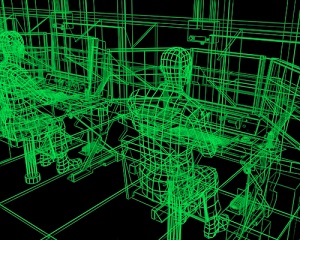Every day, there are articles and blog posts about how quickly robots are replacing jobs, particularly in manufacturing. These often include assertions along the lines of “robots are replacing human labor so rapidly and so completely that it doesn’t really matter whether the factories are in the US or somewhere else.” There are also many assertions that robotics and artificial intelligence will triumph so completely that we must accept that we will permanently have a huge unemployed population who will need to be paid a “basic income” of some sort from the government.
This May, there were breathless headlines about how Foxconn, which is Apple’s primary contract manufacturer, was replacing 60,000 workers with robots–indeed, in some tellings, had already replaced them. If you google “foxconn 60000 workers”, you will get about 130,000 hits.
But the story, however, is false; indeed, it did not even originate with Foxconn but rather with some local Chinese government officials who wanted to promote their area as “innovative.”
There has also been a lot of coverage of robotics at Adidas, which is trying to use automation to improve the labor productivity of shoe-making to the point that it can be done economically in high-wage countries such as Germany. This article on Adidas also cites the Foxconn “60,000 jobs” assertion.
One key pair of numbers is missing from the stories I’ve seen on the Adidas project: the ratio of human workers to shoes produced, with and without the addition of the robotics. You can’t really judge the labor-reducing impact of the project without these numbers. In this Financial Times article, Adidas is quoted as saying, entirely reasonably, that they will need to get further into production with their new factory before developing meaningful productivity numbers. The article also cites Boston Consulting Group as estimating that by “2025 advanced robots will boost productivity by as much as 30 per cent in many industries.” Thirty percent is a very significant number, but it’s a long, long way from a productivity increase that would imply that factory jobs don’t matter, or that we’re going to inevitably have a very large permanently-unemployed population.
There are a lot of very significant innovations taking place in robotics and AI, but the hype level is getting a little out of hand. And it’s important to remember that automation is not a new phenomenon. For example, a CNC (computer numerically controlled) machine tool is a robot, albeit it might not look like the popular conception of one, and these machines, together with their predecessor NC (numerically controlled) machines, have been common in industry since the 1970s. One thing that articles and blog posts on the topic of robotics/AI/jobs could benefit from is a little historical perspective: do today’s innovations really represent a sharp break upwards in labor productivity, or are they more of a continuation of a long-term trend? And how, if it all, is the effect of these technologies appearing in the productivity statistics?
 In his
In his